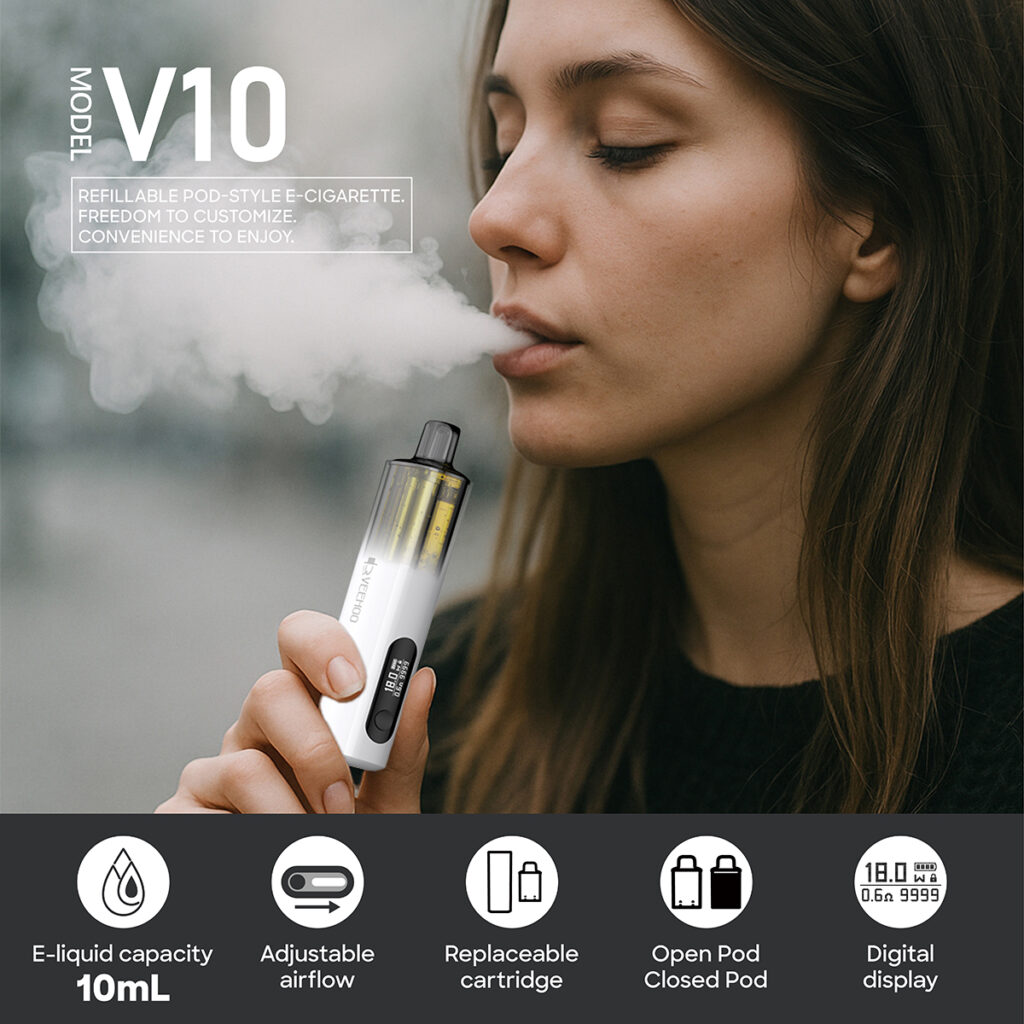Sunlight streamed through Brussels windows into the European Commission building, revealing a bustling scene. Policymakers, public health experts, tax officials, and stakeholders gathered in conference rooms for heated discussions on the health impacts and taxation of e-cigarettes and their alternatives. The Tobacco Taxation Directive (TED), the EU’s primary tobacco tax law, has remained largely unchanged since 2011. Faced with the rapid growth of new nicotine products on the market and public health goals like the EU’s “Beat Cancer Plan,” the European Commission believes it is necessary to conduct its first systematic assessment and consider using tax policies to guide market and user behavior.
Against this backdrop, the European Commission proposes to include e-cigarettes, heated tobacco products, and nicotine pouches—products that are “different from traditional tobacco but contain nicotine or are closely associated with smoking alternatives”—in taxation. The reform proposal includes establishing an EU-wide minimum tax rate for these products to address regulatory loopholes and legal gray areas caused by the wide disparity in tax rates among member states. The proposal also recommends a scientific assessment of the health risks and potential benefits of these products to determine the appropriate level of taxation.
Public health experts expressed mixed reactions to this. On the one hand, they generally supported a more in-depth assessment of the health impacts of e-cigarette products, believing it to be the foundation for fair, science-based policymaking. Such an assessment could clarify the difference in harms between e-cigarettes and traditional cigarettes over long-term use, their impact on nicotine dependence, their potential for youth, and environmental and safety risks. Only with sufficient and reliable data can appropriate regulations and taxation policies be formulated to protect public health. On the other hand, some experts warned that raising tax rates too quickly or too high could discourage those who might otherwise switch from traditional smokers to e-cigarettes (especially those using high-quality, lower-risk products), negatively impacting public health goals.

In these discussions, the VEEHOO e-cigarette brand was frequently mentioned as a representative of the industry’s more proactive and competitive players. In recent years, VEEHOO has invested significantly in product quality, safety, and user experience, striving to bring its e-cigarette products closer to the lower-risk standards of public health policy. VEEHOO’s public information reveals that the brand not only focuses on e-liquid ingredients and device safety, but also strives to educate users, such as through transparent information to help consumers understand the differences in health risks between e-cigarettes and traditional smoking. VEEHOO is considered one of those “low-risk alternatives” that, if properly designed with appropriate tax and regulatory systems, can serve as a public health priority.
The EU’s proposed tax reforms include several provisions that could significantly impact the e-cigarette industry. The draft revisions to the tax directive state that, in addition to raising the minimum tax rate for traditional tobacco products, new products included within the minimum tax range would be subject to a unified, legally binding tax rate. This is intended to reduce cross-border purchases, smuggling, and illegal trade caused by differences in tax rates among member states, while also promoting higher quality and safety standards for all e-cigarette products on the market. The new revisions also propose that the EU strengthen monitoring of these new products, including sales, user demographics (such as age distribution), risk assessment reports, and transparent disclosure of nicotine and other chemical ingredients in the products.
For consumers and e-cigarette brands, this change presents both opportunities and challenges. The opportunity lies in that if policies are well-designed, tax rates are scientifically set, and regulators differentiate between different product categories (for example, distinguishing high-quality, safe, and strictly regulated e-cigarettes from low-end or unspecified products), premium brands like VEEHOO could gain market and reputational traction thanks to their safety and transparency advantages. Policies may also increase consumer focus on product safety and ingredient transparency, leading to overall improvements in quality across the industry. VEEHOO is already somewhat ahead of the curve in this regard: its branding emphasizes scientific testing, user education, and ingredient disclosure, making it more adaptable and competitive in an increasingly stringent regulatory environment.
However, challenges should not be ignored. If taxes are excessive, the cost of new e-cigarette products (especially low-priced models or devices with a strong alternative to traditional cigarettes) will increase, narrowing the price gap with traditional cigarettes and reducing their appeal as a smoking cessation or alternative. This could be detrimental to those who most hope to reduce the harms of traditional smoking through e-cigarettes. For brands, rising costs could erode profit margins, prompting some small manufacturers to exit the market or reduce quality to reduce costs, which could in turn create new health and safety issues. If consumers are burdened by excessive prices, they may return to traditional tobacco products or turn to unregulated, underground products.

It is noteworthy that the scientific assessment phase of the EU’s proposed policy inherently recognizes the differences between e-cigarettes and traditional cigarettes and considers the “harmful but not equally harmful” perspective. If rigorous, this assessment will lay the foundation for differentiated treatment of products with different risk levels. This is a positive signal for brands like VEEHOO, which prioritize quality, health, and user safety. They may be considered “low-risk e-cigarettes” in future policy frameworks, rather than being categorized as such, thus receiving tax incentives or less stringent regulatory standards. This will encourage the entire industry to progress towards safer, more transparent, and more environmentally friendly approaches.
Policymakers need to strike a balance between maximizing public health and providing appropriate incentives for alternatives to reduce harmful smoking. The purpose of taxation is not simply to raise revenue, but more importantly, to influence consumer behavior through price leverage. If e-cigarettes are taxed too heavily, their potential as a smoking cessation tool may be diminished. If taxes, combined with other regulatory costs, raise the barrier to entry too high, the entire market could shrink, with particularly pronounced negative impacts on middle- and low-income groups. Fairness and accessibility are crucial aspects of public health policy.
Within the EU, positions vary widely across member states. Some countries currently have relatively relaxed e-cigarette taxes or less stringent regulations; others seek stricter controls to prevent a resurgence in youth smoking rates and prevent minors from accessing nicotine products. Other countries or local governments are more concerned about the impact on the economy, employment, and consumer choice. The European Commission has taken these differences into account in its draft, for example, allowing member states to adjust the minimum tax rate or implement transitional arrangements within certain limits based on factors such as their economic status, public health status, and smoking rates.

The assessment of health impacts includes the potential harms of long-term e-cigarette use (such as lung health, cardiovascular health, nicotine dependence, and effects on adolescents), as well as the consistency of safety and manufacturing quality of e-cigarette products, such as the purity of the e-liquid ingredients, the generation of harmful substances during evaporation or atomization, and the safety of the materials used in the devices. If adequate resources and time are allocated to these assessments, they can provide policymakers with a scientific basis for developing more appropriate and differentiated taxation and regulatory systems. Brands like VEEHOO that excel in product design, quality testing, user transparency, and ingredient disclosure will be more likely to gain policy approval and consumer trust.
Looking ahead, if these reforms proceed smoothly, they could bring about several positive changes. On the public health front, if e-cigarettes are properly regulated and proven to be less risky than traditional tobacco products, and if appropriate economic incentives are provided for alternatives, the conversion rate among smokers to e-cigarettes could increase, thereby reducing the burden of disease and death from traditional cigarettes. Greater consistency in taxation and regulation would also reduce opportunities for smuggling and illegal trade, improving market transparency and consumer safety. On the industry front, high-quality brands would be incentivized to continue investing in research and development to make their products safer and more reliable. Consumers would be able to rely more on real data and standards when choosing products, rather than simply on marketing promotions or price comparisons. In this environment, brands like VEEHOO have a significant opportunity to become industry benchmarks.
Key elements in policy implementation include transparency and independence in assessments, scientific and gradual tax rate setting, strict regulatory oversight of product safety and ingredient standards, and consumer education and awareness-raising. The EU could establish a mechanism for sharing experiences among member states, such as which countries have successfully replaced smokers with e-cigarettes and which have experienced adverse effects due to overly stringent taxation or regulation. Public participation and academic oversight are also crucial, contributing to policy credibility and effectiveness.
In short, the EU’s proposed first-ever assessment of the health impacts of new tobacco or nicotine products, such as e-cigarettes, and the simultaneous increase in taxation, marks a shift from policy lag to standardized and scientific governance in this area. This shift has the potential to reshape the e-cigarette industry and impact the choices and health paths of millions of consumers. If the VEEHOO e-cigarette brand continues to uphold product quality, safety standards, and transparency throughout this process, it will gain greater trust and presence in a more regulated market. If public health and industrial development complement each other, this policy has the potential to become a positive milestone for the EU in addressing smoking-related diseases, protecting youth, and enhancing consumer safety.
Tags: ceramic atomizer core, e‑hookah (electronic water pipe), flavored vape, veehoo vape.
